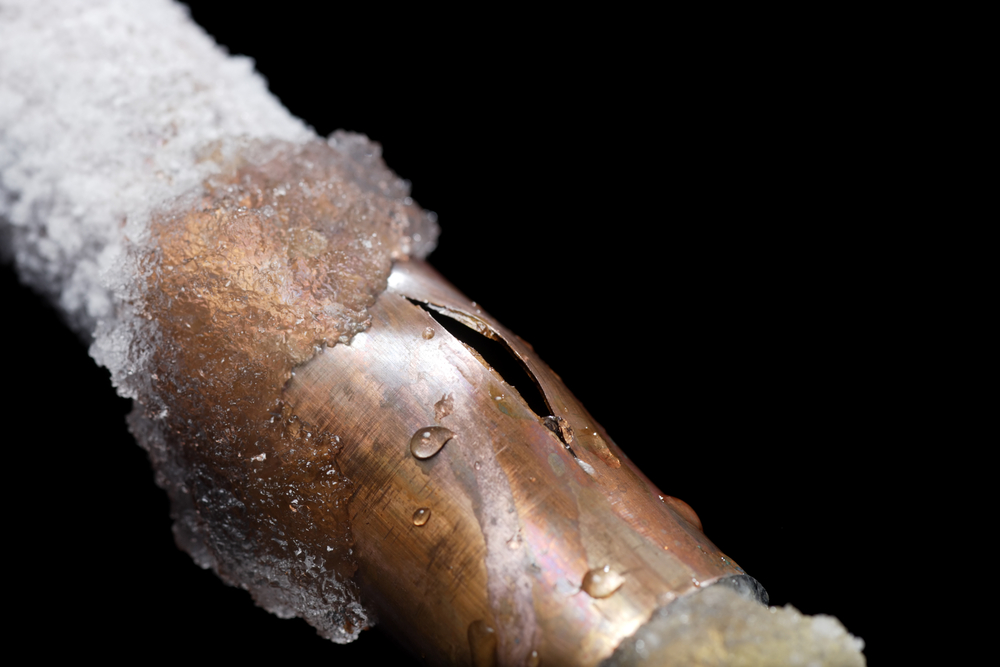What to Do If Your Pipes Are Already Frozen
Frozen pipes are an unfortunate reality for many homeowners, especially those living in colder climates like Colorado. As temperatures plummet, water within the pipes can freeze, leading to a host of problems, including the potential for pipes to burst. Burst pipes can cause extensive water damage and pose significant repair costs. Knowing how to handle frozen pipes can save you a lot of headaches and expenses with a plumbing contractor later on!
Recognize the Signs of Frozen Pipes
First, it’s essential to recognize the symptoms indicating that your pipes might be frozen. Common signs include:
- No Water Flow: If you notice that no water is coming out of your faucets, particularly during extremely cold weather, the pipes are likely frozen.
- Frost on the Pipes: Visible frost on the outside of the pipes is a clear sign that the water inside is frozen.
- Strange Odors: If you detect an unusual smell coming from your faucets or drains, it could indicate that the pipes are frozen and blocking proper airflow.
Immediate Steps to Take
If you suspect your pipes are frozen, taking immediate action to mitigate any damage is crucial.
Turn Off the Water Supply
The first step is to turn off the water supply to prevent pressure buildup within the pipes. Locate your main water shutoff valve and turn it off. This is often found where the water line enters your home.
Open Faucets
Next, you’ll want to open the faucets throughout your house to relieve any remaining pressure within the pipes. This can help prevent pipes from bursting. Start with the faucet closest to the frozen section and gradually work your way to the other faucets.
Thawing Frozen Pipes Safely
You can begin the thawing process after taking initial steps to minimize damage. Here are several methods for safely thawing frozen pipes.
Use a Hairdryer
A hairdryer is one of the safest methods to thaw frozen pipes. Begin by slowly heating the pipe near the faucet and working towards the frozen section. Ensure you keep the dryer moving to avoid applying too much heat to one spot, which can damage the pipe.
Apply Heating Tape
Electrical heating tape can be wrapped around the pipe to provide consistent heat. This method is particularly effective because it delivers a more even heat distribution. Make sure to follow the manufacturer’s instructions to avoid any risk of overheating or electrical problems.
Space Heater or Heat Lamp
Both space heaters and heat lamps can be effective tools for thawing frozen plumbing fixtures. Place the heater close to the frozen pipe but keep it at a safe distance to prevent fire hazards. As with the hairdryer method, heat the pipe gradually.
What Not to Do
While acting quickly is crucial, certain methods can do more harm than good.
Avoid Open Flames
Never use an open flame, such as a blowtorch, to thaw frozen pipes. This can damage the pipes and pose a severe fire hazard.
Don’t Use Excessive Force
If you try to manually force water through a frozen pipe, it can burst. Similarly, don’t hit or apply physical force to the pipes in an attempt to break up the ice.
Prevention Is Key
Prevention is always better than cure, especially when it comes to avoiding the financial and emotional toll of dealing with frozen or burst pipes.
Insulate Pipes
Insulating pipes is one of the most effective ways to prevent freezing pipes. Pipe insulation sleeves or wrapping pipes with heat tape can provide the necessary protection against freezing temperatures.
Seal Gaps and Cracks
Inspect your home for any gaps or cracks where cold air might infiltrate, particularly around windows, doors, and basement areas. Sealing these gaps with caulk can help maintain a more consistent indoor temperature, reducing the risk of pipes freezing.
Keep the Heat On
Keep your home’s heating system running during extremely cold weather, especially if you’re going out of town. Even maintaining a low temperature can be enough to prevent the pipes from freezing.
Let Faucets Drip
Allowing faucets to drip slightly can keep water moving through the pipes, reducing the chance of freezing. This is particularly effective for pipes running along exterior walls.
When to Call a Professional
While some homeowners may feel comfortable tackling frozen pipes on their own, there are times when it’s best to call a plumbing service professional.
No Improvement
If you’ve attempted to thaw the pipes yourself but notice no improvement, it’s time to call in the experts. There could be a more severe underlying issue requiring professional attention.
Visible Damage
If you observe any signs of pipe damage, such as cracks, leaks, or warping, it’s crucial to contact a plumber immediately. Continuing to use the damaged pipes can lead to more significant problems down the line.
Unidentified Blockage
If you can’t locate the frozen section of the pipe or if the blockage is in a hard-to-reach area, professional assistance is the best course of action.
The Importance of Professional Maintenance
Regular maintenance can prevent frozen pipes and other plumbing issues. Scheduling annual inspections and system checks with a professional plumber can help identify and address potential problems before they escalate.
Trust PlumbSmart for Your Plumbing Needs
Dealing with frozen pipes in Colorado can be stressful, but knowing how to handle the situation can make all the difference. From recognizing the signs to taking immediate action and knowing when to call in the professionals, these steps can help mitigate potential damage.
If you find yourself dealing with frozen pipes or any other plumbing issues, trust the experts at PlumbSmart. With a range of services from air conditioners to heaters, drains to water heaters, and more, we offer comprehensive plumbing and AC services in Colorado Springs, CO. Don’t wait until a small issue becomes a big problem. Contact us today to schedule your service. Let PlumbSmart handle the hard work so you don’t have to!


